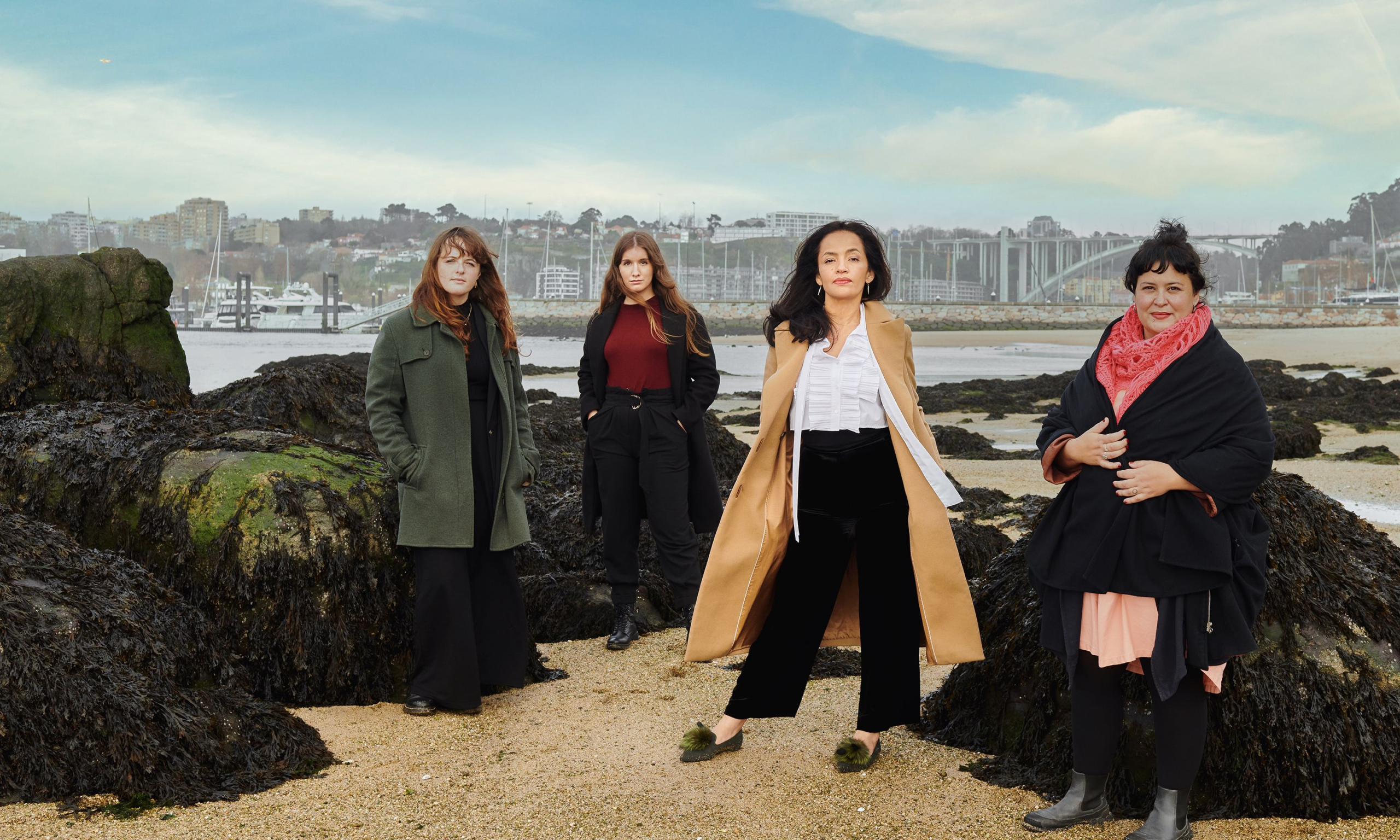Left to right: Catarina Gentil, an artist participant in Dispersed; Ânia Pais, an artist participant in The Female Thread; Lorena Duran, creator and director of Emerge-Converge and Vânia Reichartz, artist participant in The Female Thread
Photo: Rita Batalha
“Most people don’t know anything about the art scene in Portugal, that’s one of the things I want to shake off.” Speaking from her home in Porto, Lorena Duran is explaining the concept behind her Emerge-Converge project, with which she will launch a series of three, month-long virtual exhibitions starting today. The first, titled The Female Thread, features the work of women artists working in textiles. Aimed at promoting these artists to an international audience, the site is multi-lingual, with the exhibitions presented in English, Portuguese, French, and Chinese.
Born in Colombia, Duran is a former international creative director at Christie's and set up her arts strategy firm Artverbium a few years ago. She moved to Portugal four and a half years ago, after a decade in New York, followed by a stint in London, but then Brexit prompted her move. “My wish is to bring a fresh perspective to cultural activity in Portugal, especially in the wake of the pandemic,” Duran says. Emerge-Converge is supported by the Portuguese government’s Garantir Cultura programme, which has given it a grant to get started.
Olga Amaral
Photo: Diego Amaral
The Portuguese government’s attitude towards the arts and culture, Duran says, has changed considerably in the time she has lived in the country: “When I arrived, Portugal was very focused on tourism and the traditional industries. But during the pandemic, it has focused more attention on supporting the arts and culture. For example, in an effort to revive the arts sector post-pandemic, the government launched the Garantir Cultura [guaranteeing culture] programme and the Estatuto dos Profissionais da Cultura, which offers extra protections and support for people who work in arts and culture [active since January 2022].
Duran describes Portugal’s contemporary art scene as “very insider. There is so much discourse, so much happening. But it all tends to stay in Portugal.” As an example, she says: “I was having a conversation with a collector who has been collecting for 58 years, and he was saying he is thinking, only now, about making his collection more international.”
Ania Pais
The art scene centres on Porto and Lisbon. “Lisbon is a bit more diverse, partly due to the immigrant population in the area,” Duran says. “Most of the galleries are around the Museu Nacional de Arte Antiga [National Museum of Ancient Art]. But in Porto, because there are not so many gallery outlets or institutions, there are more pop-ups and grass roots exhibition spaces—the artists have to do it for themselves.”
There is a strong core of collectors, too, with key collections being those formed by Manuel de Brito, who died in 2005, which is now on show in a gallery in Alges, just outside Lisbon, and António Cachola, who started collecting in the 1990s in his 30s and now has one of the world’s largest collections of Portuguese art. Records of the government’s own contemporary art collection, the Coleção de Arte Contemporânea do Estado (CACE), for which it has an annual acquisition policy, have also been made available this year, Duran says.
Almost all works in the Emerge-Converge exhibitions will be for sale—but Duran is not herself an advisor nor is she directly involved in sales, she says “That’s a part that I don’t touch, I’m very much involved with the artists”. Prices range broadly from several thousand dollars to several hundred thousand dollars. The exhibitions are online for now, though Duran hopes they will run in physical form in future.
The first exhibition, focused on textiles, will include ten female artists, half of them Portuguese and half international, and is guest-curated by Claudia Hakim, a textile artist and director of the Museum of Modern Art in Bogotá, Colombia (MAMBO). Featured artists include Olga de Amaral and Ânia Pais.
The cycle of exhibitions, Duran says, “is almost like a triptych—it starts with textiles and touch, the second exhibition [Dispersed, launching in April] is about art born from the diaspora and then it comes back to the human body, with an exhibition called In the Flesh [starting in June], focused on the body.”

